The University of Cagliari holds and manages a large heritage, which is collected in collections and museums distributed in various locations in Cagliari and in Monserrato’s University campus: it’s open to scholars, students, and the general public.
The thousands of documents, artifacts and artifacts tell a long journey in history and science, the constant search for progress and its successes, the efforts made over the centuries by scientists, teachers, and men of culture.
The documents about the foundation of the University, kept in the Historical Archives, are of particular value.
The museum heritage of the University of Cagliari is managed by the Interdepartmental Centre of Museums, Collections and Historical Archives (CIMCAS).
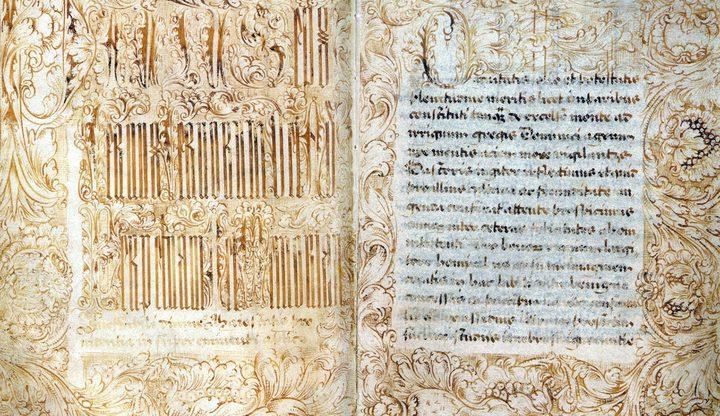
The Historical Archive of the University of Cagliari, located on the ground floor of the Rectorship, was formed in the early twentieth century following the separation of current practices from those "ancient".
The collection of documents amounts to over 12,000 units, divided into two main sections: Section I, which collects the documents produced in the period 1764-1848; Section II, which includes the documents issued from 1848 to 1946.
Address: Department of Letters, Foreign Languages and e Cultural Heritage - Via Università, 40 - 09124 Cagliari
Telephone: +39 070 6752125
E-mail: archiviostorico@unica.it
University of Cagliari’s documents of foundation
University of Cagliari’s Historical Archive Site
The Luigi Piloni collection, which originated from a legacy to the University of Cagliari, is located in via Università 32, in Cagliari.
With a munific gesture - driven by affection for his land and a clear awareness of the finalism of cultural heritage - Luigi Piloni gave the University of Cagliari his Sardinian collection, which he gathered with affection and intellect in equal parts during long years of research, driven by strict selective criteria.
An organic and orderly arrangement of the works of the objects both in the large spaces of the walls and in the numerous showcases allows the public to know much of the collection.
Address: Via Università, 32 - 09124 Cagliari
Telephone: +39 335 1364169
Email: collezionepiloni@unica.it
Opening hours
Opening on request by reservation, in the mornings only from Monday to Friday, in the afternoon only on Tuesday or Thursday.
Organisation of sections of the collection
- On the entrance wall: effigies of historical characters; in two showcases are exposed the works published by Luigi Piloni on Sardinian iconography.
- Room I: Paintings from XVIth century to the end of XIXth; in the centre, on two large lecterns: prints and watercolours with religious iconography.
- Room II: Paintings in tempera by Philippine Della Marmora: views of Sardinia.
- Room III: Paintings from the beginning of the XXth century to 1980.
- Room IV: Silverware for clothing.
- Room V: On the walls and in the showcases: Maps and plants, Sardinian costumes (prints, drawings, watercolours and paintings in tempera); in panels: Sardinian carpets, "mantas", "coberibancus" and "bertulas".
- Room VI: Views of Sardinia (watercolours, drawings, and paintings in tempera).
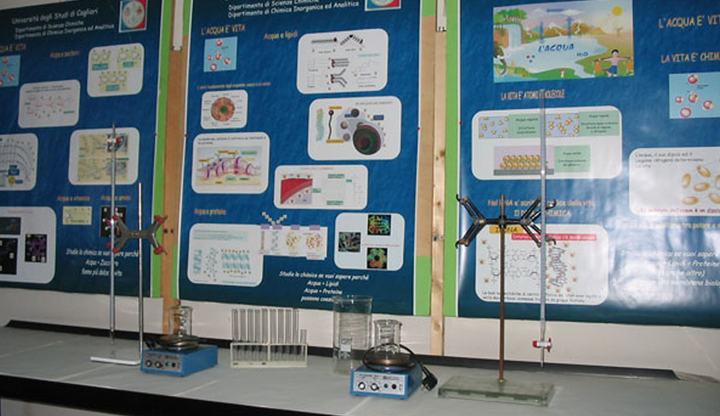
The idea of creating a Collection of Chemical Instruments and Appliances was conceived in the context of the first Week of Scientific and Technological Culture: in 1996 it resulted in the creation of a working group, consisting of a small number of experts, both from university and the world of school, that intended to enhance the historical heritage-culture of chemistry through initiatives to spread scientific culture.
Address: Monserrato’s University Campus, 09042 - Monserrato, CA
Telephone: +39 070 6754361 - Fax: +39 070 6754388
Website: https://dipcia.unica.it/museo_chimica/it/
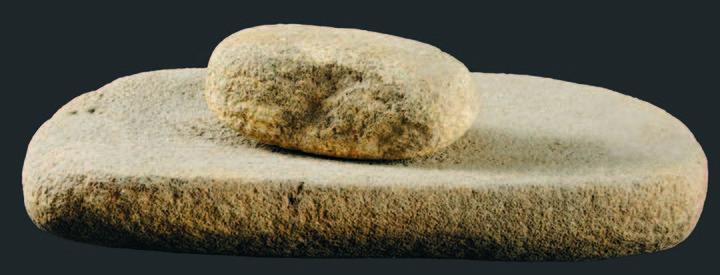
In the prehistoric Lithic Collections of the University of Cagliari, belonging to the C.I.M.C.A.S. (Interdepartmental Centre of Museums, Collections and Historical Archives) of the University of Cagliari, two important collections of prehistoric lithic artefacts, result of the work of Professor Enrico Atzeni, come together.
The first and most substantial lot of the Collections originates from surface research that Prof. Atzeni has coordinated for decades, mainly along the arable lands of the fertile plains of Campidano. It consists of finds variously distributed over time, from the Neolithic to the Nuragic. A remarkable variety of weapons and tools in chipped and polished stone accounts for the systems of prehistoric production from raw materials such as obsidian, flint, and other hard metamorphic and volcanic rocks, of local and extra insular origin.
The second collection includes a smaller yet no less interesting set of instruments of the ancient Stone Age of African and Mediterranean origin, in particular bifacial and other typical flint artefacts. They were incorporated into the university exhibition by donation from private collectors, originally intended to serve as a teaching aid for the educational activities of university laboratories.
This emblematic collection summarises the technological evolution of mankind, from the first groups of hunter-gatherers to the threshold of urban civilization.
Address: Citadel of Museums "Giovanni Lilliu", Piazza Arsenale, 1 - 09124 Cagliari
Telephone: +39 070 6757626
Email: luglie@unica.it
Website: https://people.unica.it/lasp/
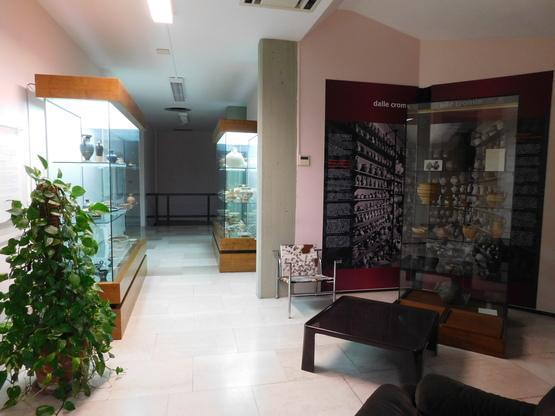
The premises of the Department of Letters, Foreign Languages and Cultural Heritage of the University of Cagliari host, since 1990, part of a larger collection of archaeological material known as the "Gorga Collection". Consisting of about 40,000 finds, this was formed by the famous Roman tenor Evangelista Gennaro Gorga (1865-1957) who was the first to play “Rodolfo” in Puccini’s “Bohème” in 1896, at Turin’s “Teatro Regio”.
The Cagliari section consists of 147 ceramic vases, and is representative of numerous classes of ceramics that exemplify much of the production of ancient Italy from the middle of the third millennium B.C. until the end of the second century A.C. Among the original finds, a number of fakes has been recognised: a not so uncommon phenomenon in this kind of collections.
The Collection was assigned to the University of Cagliari in 1954 by the then Ministry of Education. The inventory register of the then Institute of Archaeology record its entry into the University of Cagliari as of 15 January 1955.
At the end of the 1990s, the vascular repertoire became part of the C.I.M.C.A.S. (Interdepartmental Centre of Museums, Collections and the Historical Archives of the University of Cagliari).
The finds are distributed in four showcases, based on production areas and chronology.
Showcase 1
Vases of the Eneolithic period (mid III - early II millennium B.C.), of the Mycenaean period (XIV-XI century BC) and some productions of the Etruscan-Lazio area that can be classified between the middle of the VII and the beginning of the V century B.C.
Showcase 2
Vases characterised by a "red figures" or "overprinted" decoration coming from Attica (late V - early IV cent. B.C.), from southern Italy (mid IV - III cent. B.C.), and from Etruria (late VI - IV cent. B. C.)
Showcase 3
Vases typical of Roman civilisation: from the republican to the imperial age.
Showcase 4
Vases produced in southern Italy from the middle of the sixth to the beginning of the third century. B.C.
Archaeological Collection Evan Gorga - red figures dish for Apulian fish, second half IV cent. B. C.
Address: Citadel of Museums "Giovanni Lilliu", Piazza Arsenale, 1 - 09124 Cagliari
Telephone: +39 070 6757618
E-mail: maibba@unica.it
Website: https://people.unica.it/lac/
The statues of Palazzo Belgrano
In the atrium of the Rectorship of the University of Cagliari, in via Università 40, are placed four statues made and placed in 1964 during the initiatives for the second centenary of the restoration of the University, implemented in 1764 by the will of the Savoy King Charles Emmanuel III.
The four statues, acquired on the initiative of the Rector Giuseppe Peretti in collaboration with the art and culture expert Rodolfo Siviero, represent Philosophy, Law, Medicine, Science and Technology.
Address: Rectorship of the University of Cagliari, Via Università, 40 - 09124 Cagliari
Introduction by Rodolfo Siviero
One of art oldest images is the human figure, and around this concept over the centuries have alternated classical harmony, pantheism and Christianity of the Renaissance; so much so that Leonardo da Vinci wrote: "man is the measure of the world".
The four statues depicting the ancient disciplines of the University of Cagliari were therefore to represent human dignity.
The great discoveries of intelligence that have illuminated decades of the nineteenth and early twentieth centuries, the merry singing of Manet’s colours, Picasso’s cubism, De Chirico’s metaphysics, are all personal discoveries, but they represent life and research of their times. The statues of Cagliari are part of the Italian tradition, they continue their studies, they embody the course of study youth follow, and they are a discipline as well.
Changes in human society occur by natural growth such as that of trees and things, therefore experiences that are ends in themselves, sophistications that do not correspond to a true intent of artistic research, create deep disorientation in consciences and betray the very meaning of art, which is always a difficult conquest of universal values. When this intellectual confusion, which has manifests itself in abstraction art, informal art, and other similar attempts will find its order and its logos, the new face of art will discover the new aspect of the human infinite.
These statues represent the school from which one must always build or rebuild that new art that will develop alongside the common progress of all peoples, one that now does not seem to be appreciated by anyone in Italy. For this reason, we preferred reality to the controversy, a tiring reality indeed, because beauty and truth really unite only at the highest level. What remains in time are the values of art and the moral qualities, both opposed by petty men; but as the spirit prevails, so true art does not die and is constantly rediscovered.
These realities in our time are bewildered by the infinite noises that surround them and surround them, but as these die for natural inconsistency, those remain.
The statues of Cagliari are a life lesson that the Rector of the University and the Academic Senate wanted to welcome into their university; I am pleased to have been the link.
Rodolfo Siviero
Philosophy
Characteristics
Author: Antonio Berti (San Piero a Sieve - Florence 1904)
Material: bronze
Height: m 2,40
Antonio Berti wrote of this work: "When my friend Rodolfo Siviero proposed four subjects for a statue, I enthusiastically chose Philosophy. The theme captivated me, and I did four studies: two naked figures with a crow, the other two wrapped in large and long masses of hair. I made the last sketch to the desired size. I looked in the clay the likeness of a being pervaded by the desire to explain the reason of things. The tense features of the face denounce this wear of the brain and spirit. The mouth is open, yearning for the torment of knowing; the gaze is immersed in the deep conception of thought. The long hair snakes like a river along the young woman’s limbs. The left hand raises like a veil a mass of hair to get out of front something that prevents it from understanding the reason for our birth to life, our going towards death. " With great passion and humility, I tried to do something worthy of the theme entrusted to me. I thank those who have offered me this opportunity, begging them to welcome my work with the others, as an act of courage and faith in Art in a moment of such great bewilderment".
Jurisprudence
Characteristics
Author: Bino Bini (Florence 1916)
Material: bronze
Height: m 2,32
Bini Bini wrote of this work: "There is no traditional symbology for the study of law in its various forms, since Jurisprudence is a thing, and Justice is another thing entirely. It was therefore necessary to entrust to the expression of the figure the task of clarifying its allegory. It was necessary that the sculpture was animated with human warmth, that gave the sensation of an unshakeable, incorruptible stability; that it carried marked in the face the severity and sweetness, the will and the understanding and a veil of melancholy suffused with feeling. I don’t know to what extent I succeeded. My sympathy for animals has meant that in this work I didn’t forget them. At the woman’s feet a porcupine plays with a veil flap, symbolically ready to gather with quills in defense of the right".
Medicine
Characteristics
Author: Mario Moschi (Signa - Florence 1896)
Material: bronze
Height: m 2,30
Mario Moschi wrote about the work: "For me sculpture is also architecture. The theme of medicine interested me, and I chose it because with its classic attributes, the stork and the snake, it allowed me to build a harmonious subject, responding to my feeling of art. Each fragment of sculpture has its own life, and this is what I have searched in the details of the statue. The play of the elements led me to conclude a rhythmic set; it’s necessary, because medicine has for me the meaning of the preservation of life, which is beauty and harmony".
Science and the technique
Characteristics
Author: Francesco Messina (Linguaglossa 1900)
Material: bronze
Height: m 1,92
On this work Francesco Messina wrote: "When the ghost of a statue moves in the artist’s imagination and causes the urgency of realisation, it is always the plastic, chiaroscuro, lyrical factor, which imposes a meaning and, therefore, a subject. It is called Demeter, Venus, Eve, or simply "female figure", or as in our case, "Science", the most authentic emotion, which must necessarily and primarily release will always be the form of the arabesque design in harmony of volumes, as the sculpture of all time requires.
A statue is either beautiful or dead matter, if it is not inspired by the poetic inspiration of the author".
MUACC – University Museum of contemporary arts and cultures is a new cultural institution within the University of Cagliari, dedicated to the preservation, promotion, and enhancement of the historical and artistic heritage of the contemporary age of the University. Boasting a particularly striking landscape, the spaces of the Museum occupy the ground floor and the first floor of a prestigious building in the historic centre, in the heart of the Quartiere Castello: the Palace of the Marquises of Quirra, also known as Palazzo Cugia or Palazzo Nieddu, named after the owners who succeeded over the centuries, in the part of the building on Via Santa Croce, adjacent to Via Corte d'Appello.
Address: Via Santa Croce 63, 09124 Cagliari
Telephone: 070 675 5330
E-mail: muacc.info@unica.it
Mission
MUACC’s mission, which is founded on the vocation to research, is part of a context that embraces the principles affirmed by ICOM and the values expressed in the Magna Charta Universitatum, pursuing the dissemination of knowledge through exhibitions, teaching and third mission activities.
The fundamental objectives are defined following a conception of the University that is increasingly at the service of the community, its sustainable development and presuppose the essential role of the museum institution in the processes of growth and social change, in an inclusive, accessible and multicultural sense.
Collections
Artist Italo Antico (1934) distinguished himself in the second half of the XXth century for his extremely consistent research and donated his works to the University of Cagliari; currently, his works are set up in the museum spaces: his expressive figure is sublimated in the privileged and distinctive stainless-steel sculptures.
As Gillo Dorfles has remarked since the 1970’s, Antico has faced countless variations of a method, through his work with steel, aiming to explore the potential of the line and the sign, fixing the moments and what they contain, transfiguring them into a perpetual tension of nature towards the universal and the absolute. Thanks to the donation of the artist and the commitment of the University, the most representative sculptures of Antico - exhibited together with a selected corpus of paintings, jewelry, and textile articles - represent today a great wealth available to the community.
Opening days and hours (from 21 April 2022)
Tuesday 16:00-19:00
Thursday 16:00-19:00
Visits in different days and times can be agreed upon reservation.
For information and reservations: muacc.info@unica.it; 070 675 5330
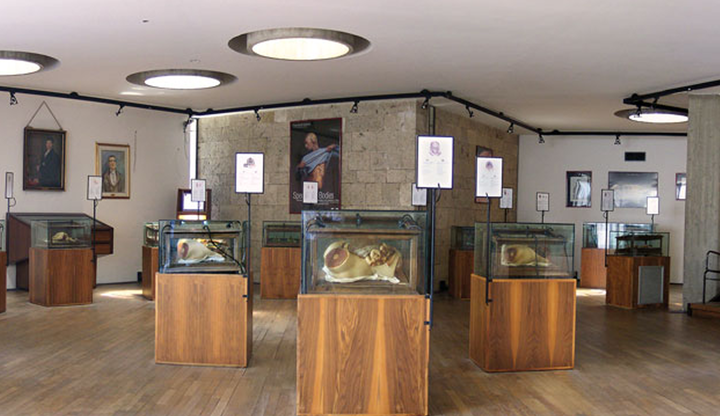
The collection of anatomical waxes created by Clemente Susini of the University of Cagliari was commissioned to the Florentine artist Susini in the early XIXth century by the viceroy Charles Felix, through the professor of anatomy Francesco Antonio Boi.
The collection, exhibited in the Pentagonal Hall at the Citadel of Museums, includes 23 anatomical models in polychrome wax, made from plaster casts of anatomical finds, which meticulously reproduce, in section, the different parts of the human body, both male and female.
Address: Citadel of Museums – 1st floor of the Temporary Exhibits Room, piazza Arsenale, 1 - 09124 Cagliari
Telephone: +39 070 675 7627 - Fax: +39 070 675.4003
Email: museocere@unica.it
Website: http://pacs.unica.it/cere/
Opening hours
from Wednesday to Monday (including Saturday and Sunday) from 9:00 to 13:00 and from 16:30 to 19:00.
The exhibition is closed on Tuesdays.
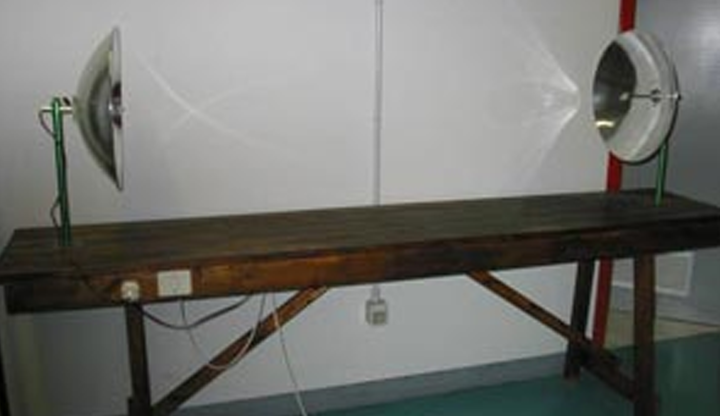
The Physics Museum of the University of Cagliari houses hundreds of instruments and devices, the oldest dating back to the XVIIIth century. The Museum is always open and accessible by Physics’ students: they can find a practical demonstration of the laws studied in their courses, regularly organises guided tours open both to schools and the general public at special events, such as the European Night of Researchers’. On these occasions, visitors are guided on a path that allows them to understand numerous physical phenomena, including some spectacular effects that allow them to liven up the visit.
Modern copies of many instruments have been made, such as the perfect and almost indistinguishable Pacinotti dynamo, which can be put into operation during visits. Along with the copies there are numerous other exhibits that allow you to observe various phenomena in different fields of Physics interactively.
The story
The Physics Department houses in the large atria on the ground floor an important Museum that, like many university science museums, was not born to be a museum, but as an endowment of tools used for teaching and scientific research. Over time, many of these instruments have lost their initial purpose and now testify the development of scientific knowledge in past centuries.
Among the valuable pieces of the Physics Museum there are some instruments sent to Cagliari in 1764 by Charles Emmanuel III of Savoy. There is also the "dynamo-electric machine" built in Cagliari between 1873 and 1881 by Antonio Pacinotti, which is the symbol of the second industrial revolution.
The power valves coming from the microwave transmitter station used by Guglielmo Marconi to establish a connection between Capo Figari and Rocca di Papa are of particular value and interest, as well as the first He-Ne laser arrived in the Department in the mid-1960’s for spectroscopy experiments.
This heritage has been recovered and partly restored by the meritorious work of Prof. Franco Erdas in the second half of the XXth century and Prof. Guido Pegna, Director of the museum for over twenty years.
Address: University campus of Monserrato, 09042 - Monserrato, CA
Telephone: +39 070 6754702
Website: LINK TO BE VERIFIED
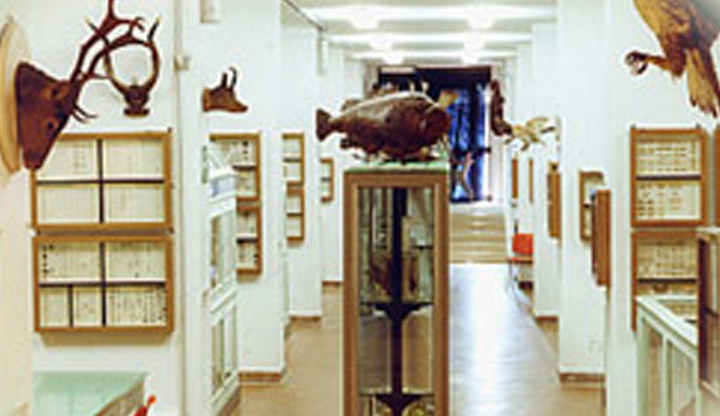
The Museum of Zoology of the University of Cagliari, recently reorganised into a new exhibition with the contribution of the C.I.M.A.S., includes several thousand specimens. The scientific and educational interest of the collection is added to the remarkable value and historical value of the pieces. The visit to the exhibition offers interesting ideas not only for scholars of the subject but for all curious people and nature lovers.
The story
Since 1927, the collections are housed at the Institute of Marine Biology of the Tyrrhenian Sea, which nowadays is part of Animal Biology and Ecology, belonging to the Life and Environmental Sciences Department. After suffering heavy losses following the bombings of World War II, since the 1960s the collections have been reorganised and made available to students of Natural and Biological Sciences, so they can study Zoology and Comparative Anatomy.
The exhibition
Animals from different geographical regions are exposed. You can see many exotic species from the most varied continents, including the South American armadillo, the Australian koala, the platypus, anteaters, sloths, and numerous monkeys.
Specimens of all the main animal types - vertebrates and invertebrates - are represented and there are the most known and common animals of the Italian and Sardinian fauna, as well as exotic and rare species, from the smallest insects to whales, sharks, and elephants.
The Sardinian fauna is represented by a very accurate collection that includes representatives of many endemic species. There are not only common species but also species now extinct or extremely rare in nature. In particular, you can admire the vulture monk, the eagle of Bonelli, griffins and wild cats. Various dioramas, reconstructing the natural environment of many animals, have been set up.
The ornithological collection is noteworthy for its organicity and completeness: it boasts around 1000 specimens, including all birds of prey (both present and extinct) of the Sardinian fauna, as well as some exotic birds such as the American migratory dove (of which there are only seven other stuffed specimens in the whole world) and a very rare New Zealand kiwi.
Guided tours
You can visit the Museum by booking a guided tour at the following e-mail address: museo_zoologia@unica.it
Address: Via Ing. Tommaso Fiorelli, 09126 - Cagliari
Website: https://web.unica.it/unica/it/museo_zoologia.page
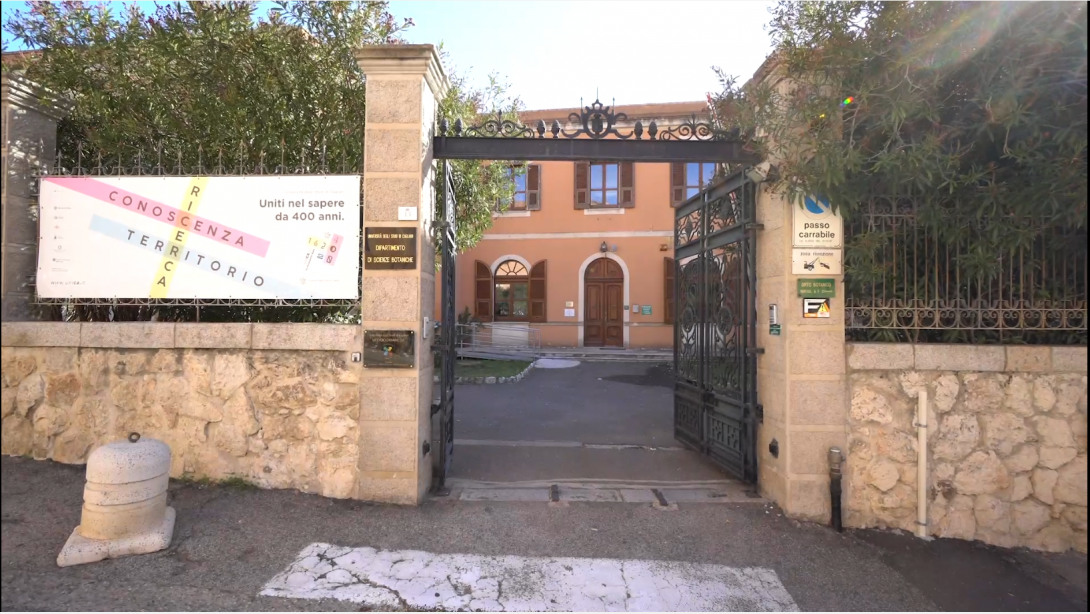
The Herbarium Museum of the University of Cagliari, located in the centre of Cagliari, on the ground floor of a late XIXth century building is an integral part of the Botanical Section of the Department of Life and Environmental Sciences (DiSVA).
It adheres to the Interdepartmental Center of Museums and Historical Archives of the University (CIMCAS),I t is included in the museum collections in the portal ANMS-Coll Map and is part of the "Coordination of the Italian Network of Botanical Museums (corimbo)". For its heritage and its potential is listed in the Herbariorum Index with the acronym CAG.
Address and opening hours
Via Sant'Ignazio da Laconi, 13 - 09123 Cagliari
The Museum is accessible for consultation by appointment only:
Morning: Monday to Friday, 8:00-13:00
Afternoon: Monday and Wednesday 15:00-17:30
The opening of the Museum is linked to the academic calendar; therefore, visits are suspended during the period of summer and Christmas closures. Special opening days are scheduled for the Scientific Week, Open Monuments, F.A.I Days and Science Festival.
For information and reservations
Dr Roberta Lai, Curator of the Museum
Tel.: 0706753532/3530 e-mail roberta.lai@unica.it
e-mail: herbariumcag@unica.it
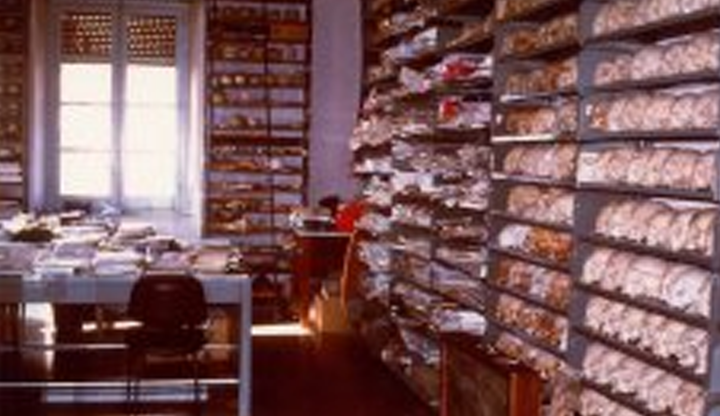
The Sardinian Museum of Anthropology and Ethnography was founded in 1953, thanks to the interest of Prof. Carlo Maxia, then Extraordinary of Anthropology at the University of Cagliari, who managed to obtain funds after the war to raise the building of the pre-existing Institute of Normal Human Anatomy.
After having shared for 45 years the premises with the Section of Anthropological Sciences, the Sardinian Museum of Anthropology and Ethnography was transferred to the new headquarters at the University Campus of Monserrato (Ca).
Since 1993, the museum has been part of the C.I.M.A.S. (Interdepartmental Center of Museums and Historical Archives), the institution that collects the museums of the University of Cagliari.
The collections
Among the material collected in the Museum, the following collections stand out:
- human skeletal finds, dating from the Neolithic through the Eneolithic, the Nuragic, the Roman, the Lombard, the Medieval up to the modern period. This collection is continuously increased thanks to the collaboration that the Section of Anthropological Sciences provides during archaeological excavations;
- pathological skeletal finds: in particular, the skull of a person who was trepanned three times while still alive, coming from the Nuragic skeletal series of Seulo, and some skulls showing the mutilation of the occipital foramen;
- Sardinian costumes: they represent the most interesting and most difficult part to find in the Ethnography;
- objects: mortars, baskets, cork containers, cheese molds, etc., a series of furnishings, both clay and of other materials, dating back to the proto-historical era: terracotta, obsidian tips, Nuragic hoes and clubs;
- a collection of recently restored ex-voto;
- two mummies;
- moulds of Catarrine, illustrating the evolution up to Homo sapiens;
- a remarkable collection of slides and numerous films documenting the travels and studies of Prof. Carlo Maxia, founder of the Museum.
Address and contact details
University Campus of Monserrato, 09042 - Monserrato, CA
Telephone: +39 070 6754291 - +39 070 6754130
Email: museoae@unica.it
Website: https://www.unica.it/unica/it/museo_antropologia.page

"Domenico Lovisato"’s Museum of Geology and Paleontology and "Leonardo de Pruner"’s Museum of Mineralogy of the University of Cagliari include a rich collection of minerals, fossils, rocks and an original historical documentation related to the activities: manuscripts, publications, travel and country diaries, topographic, geologic and mineralogical laboratory instruments.
The finds of the Museum of Mineralogy are about 8000; the findings of the Sardinian Museum of Geology and Paleontology exceed 20,000. This collection of mineralogical, geo-paleontological and petrographic finds from Sardinia and all over the world was carried out over two centuries.
Great merit is due to Professor Ida Comaschi Caria, for the arduous task of reorganising the Lovisato collections, in memory of which the Museum of Geology and Paleontology was named.
Information and reservations
Dr Laura Impagliazzo - Museums and Scientific Collections Sector
E-mail: limpagliazzo@amm.unica.it
Address: Facoltà Universitaria, Via Trentino, 51 - 09127 Cagliari
Telephone: +39 070 6756618 - Fax: +39 070282236
E-mail: musei.dister@unica.it
Website: http://sites.unica.it/geomusei/
